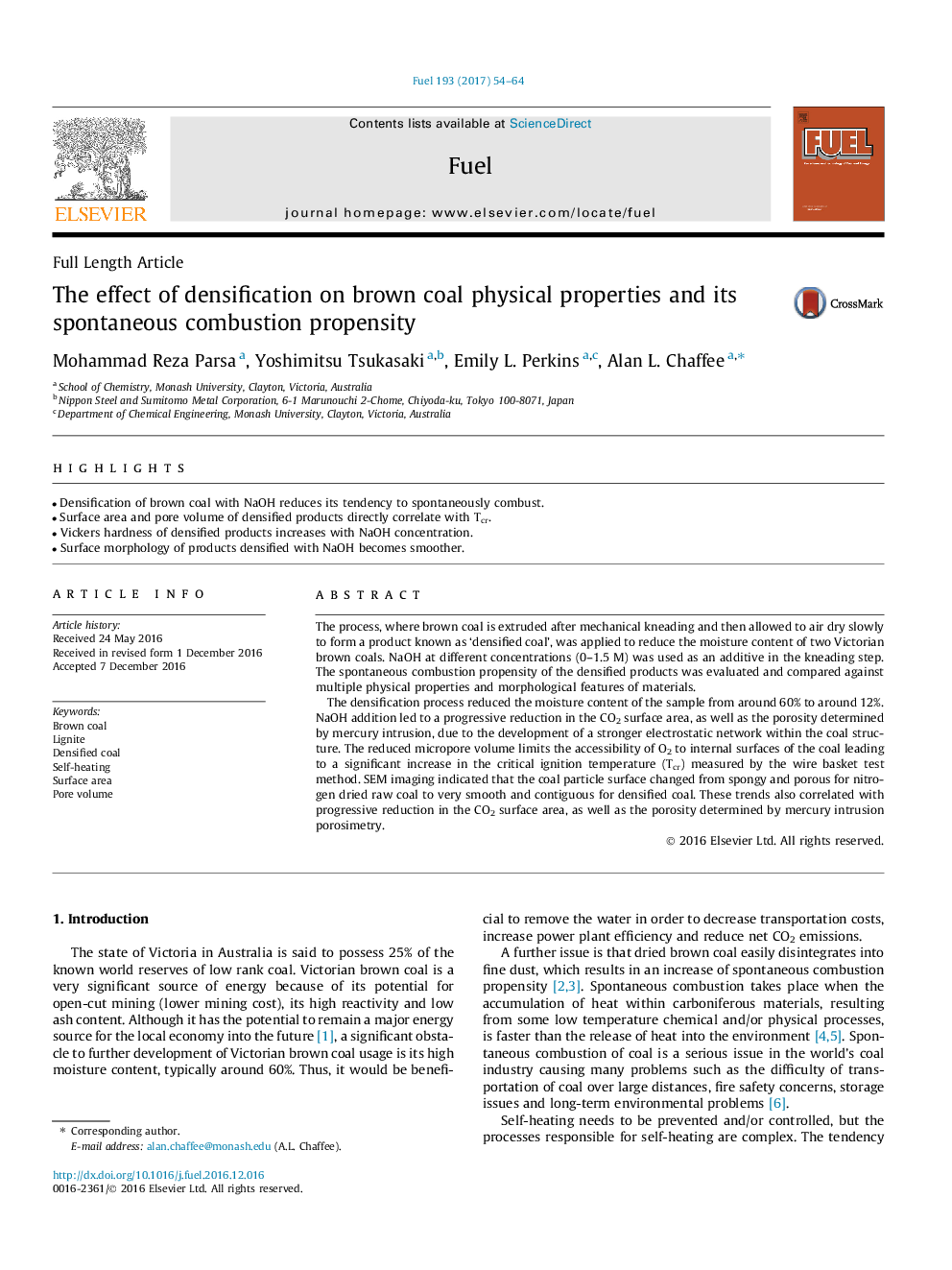| Article ID | Journal | Published Year | Pages | File Type |
|---|---|---|---|---|
| 6474890 | Fuel | 2017 | 11 Pages |
Abstract
The densification process reduced the moisture content of the sample from around 60% to around 12%. NaOH addition led to a progressive reduction in the CO2 surface area, as well as the porosity determined by mercury intrusion, due to the development of a stronger electrostatic network within the coal structure. The reduced micropore volume limits the accessibility of O2 to internal surfaces of the coal leading to a significant increase in the critical ignition temperature (Tcr) measured by the wire basket test method. SEM imaging indicated that the coal particle surface changed from spongy and porous for nitrogen dried raw coal to very smooth and contiguous for densified coal. These trends also correlated with progressive reduction in the CO2 surface area, as well as the porosity determined by mercury intrusion porosimetry.
Related Topics
Physical Sciences and Engineering
Chemical Engineering
Chemical Engineering (General)
Authors
Mohammad Reza Parsa, Yoshimitsu Tsukasaki, Emily L. Perkins, Alan L. Chaffee,
